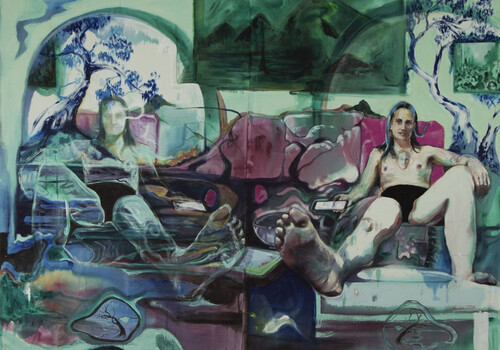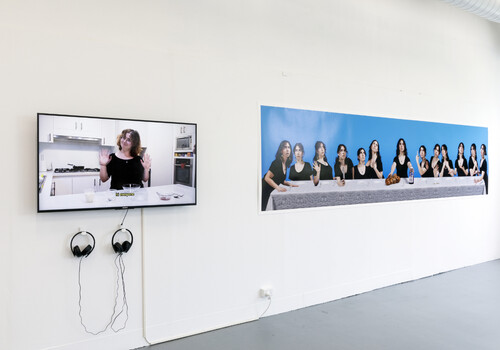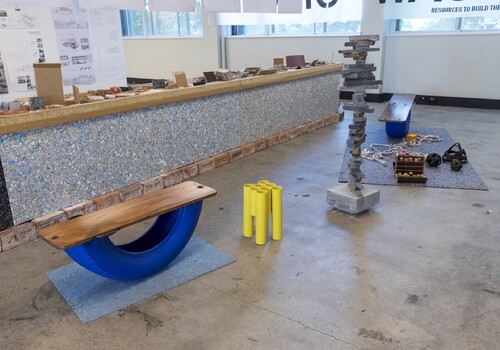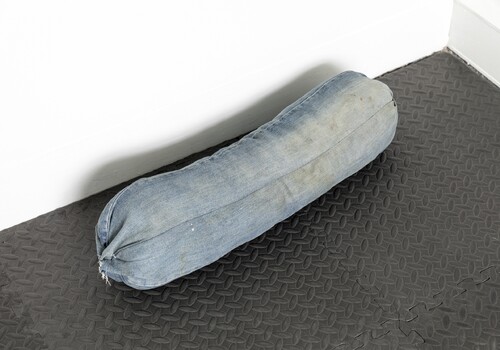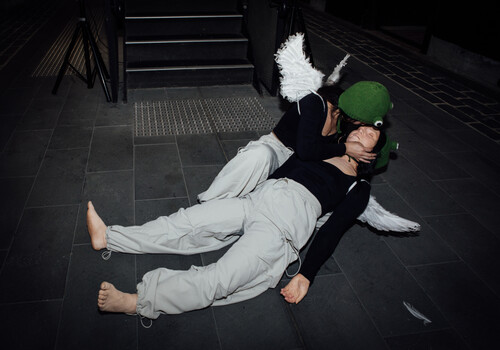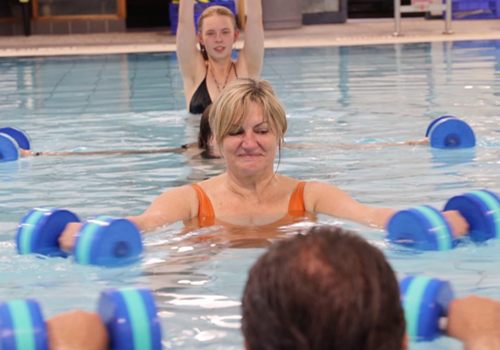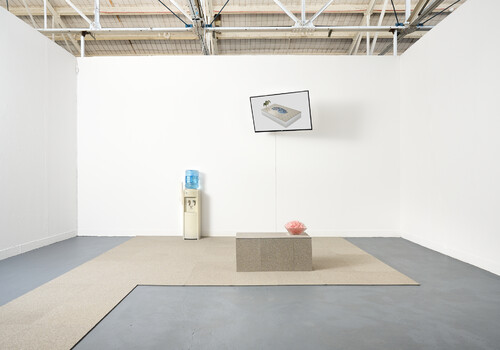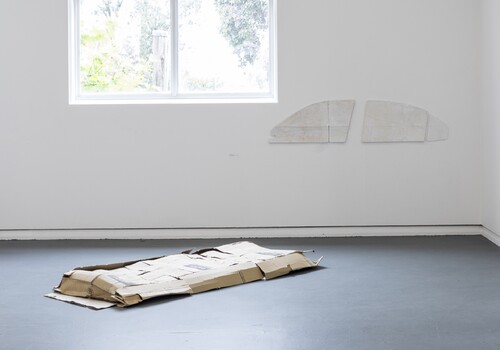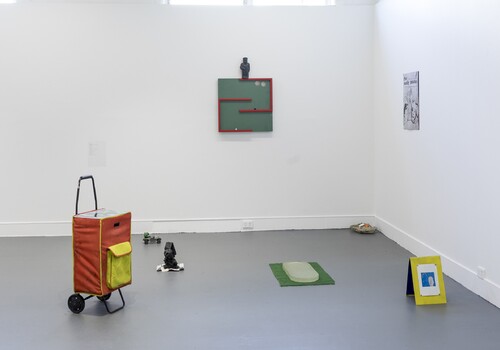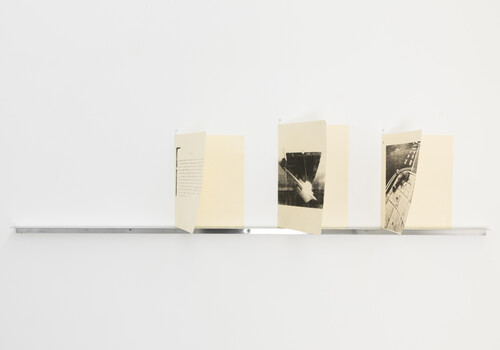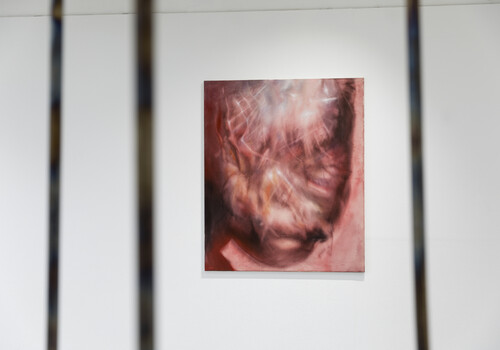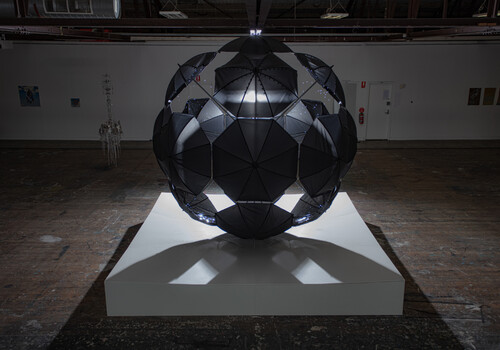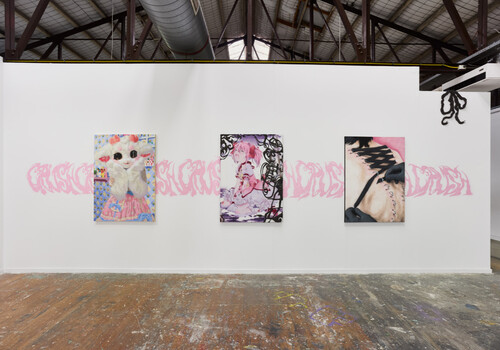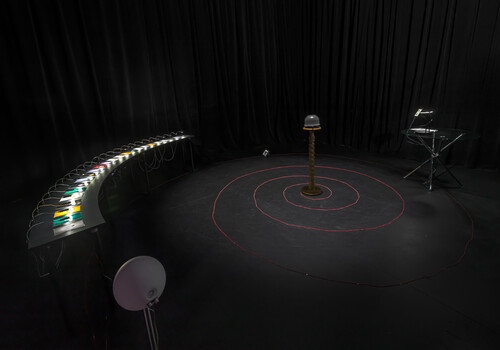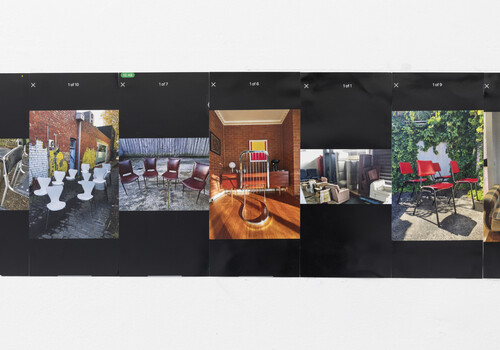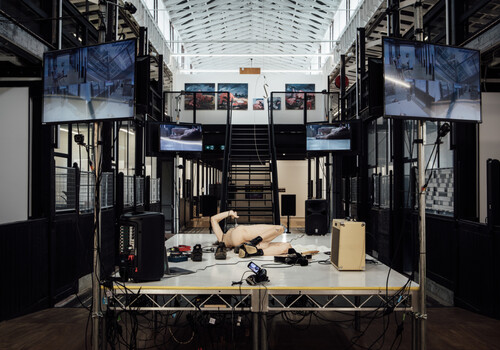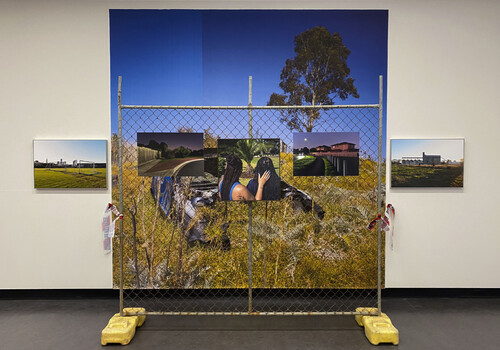Master of Fine Art, RMIT
By Emily Prater
As often as we’re asked not to analyse a work of art through a biographical lens, it is difficult to avoid this when artists cite personal experience as their starting point. I experienced this dilemma when visiting the 2023 RMIT Masters of Fine Art exhibition. Many of the artworks tell stories of their creators’ personal lives, referencing family, friends, or memories. Should we be searching for personal backstories as we view the artworks? Or does this limit the number of ways we can interpret them?
In particular, Paula Maggs’s collection of paintings, Unfiltered: Exploring My Psyche Through the Act of Painting (2023), suggests connections between the artist’s life and the content of her pieces. Maggs acknowledges this biographical inspiration, writing in her artist’s statement that she uses “raw expression to manifest large symbolic compositions of self”. I was first drawn to her Swimmers (2023), a large canvas showing two women, bodies submerged, as they move gracefully through the water on a warm day. The majority of the space is filled by Maggs’s depiction of the water, a brightly coloured stew of turquoise blues, slime greens, and vivid yellows. It is vibrant and alive, so much so that it disguises, almost drowns, the figures in its midst. Another painting, Promised Land (2023), is very different. The swirling river and tree trunks create a very appealing, if somewhat comfortable, composition.
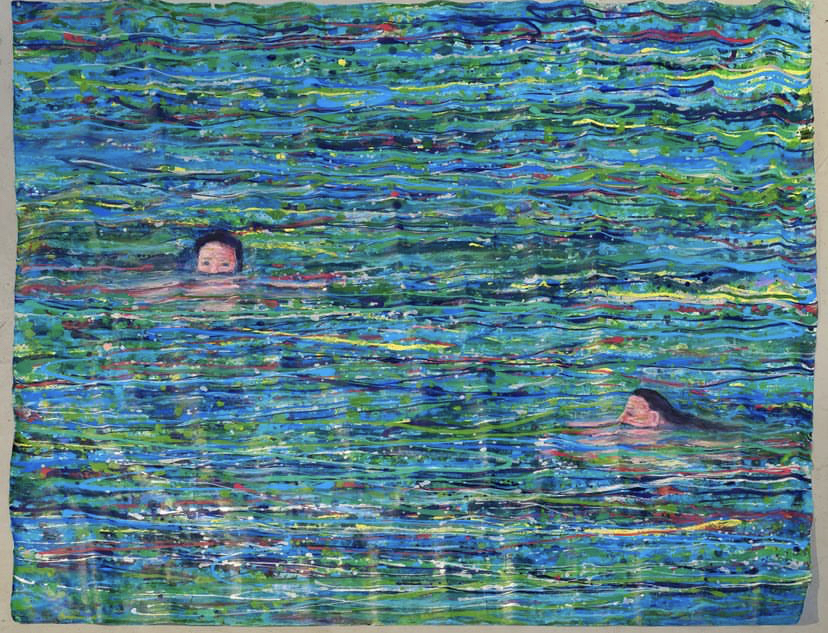
The remainder of Maggs’s displayed works, Slightly Toxic, Father Greg, Woman with Pearls, Thin Lipped, and Unhinged (all 2023) are smaller depictions of faces. Picasso-like in the abstract treatment of their subjects, they distort features and exaggerate expressions, conveying a range of emotions that Maggs claims relate to her own past. To me, Women with Pearls was the strongest and most original, whereas I worried that Thin Lipped—the work Maggs claims is a likeness of herself—was at risk of becoming facile and a mere reinterpretation of the much-repeated formal characteristics of modernist painting. Perhaps Maggs knew the subject too well. Or perhaps, as a biographically-inspired piece, it’s difficult to appreciate without understanding its background.
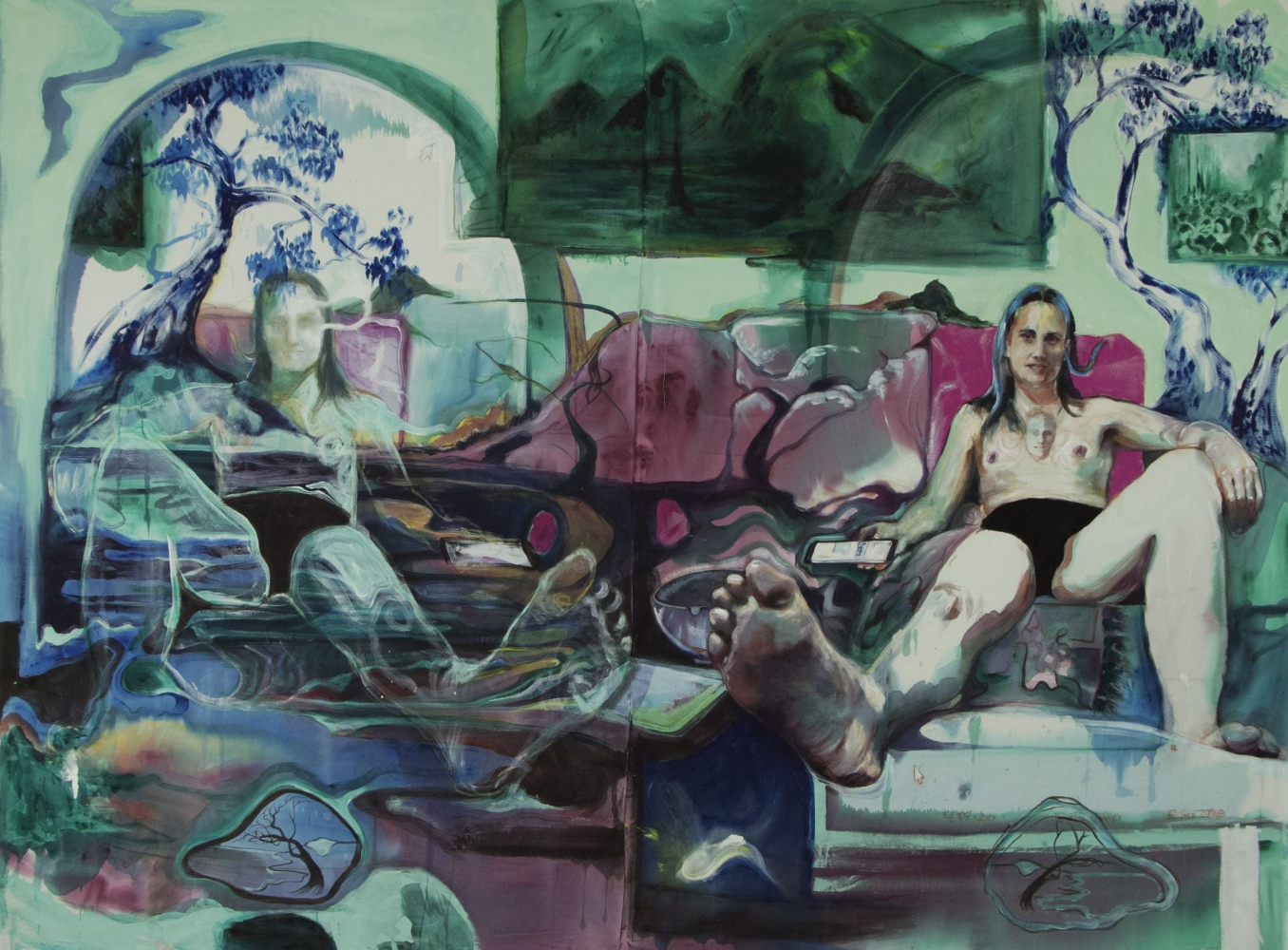
Otherwise exciting was Bonnie-Jean Whitlock’s The Junk Pile (2023), which the artist explains was titled for “the accumulation of experience sustained within my own body… [that] contaminates everything I say, do and make”. It is again hard to ignore biographical references. Yet Whitlock’s work is mesmerising even without such an explanation. I particularly liked her Everything Changes, Everything Stays the Same (2023)—to me, the mirroring of the forms of the trees in the toes and feet of the two people suggested the importance of nature to our bodies and souls, whereas the bright beams from the phone screens seemed to make a statement about disconnection and unreality.
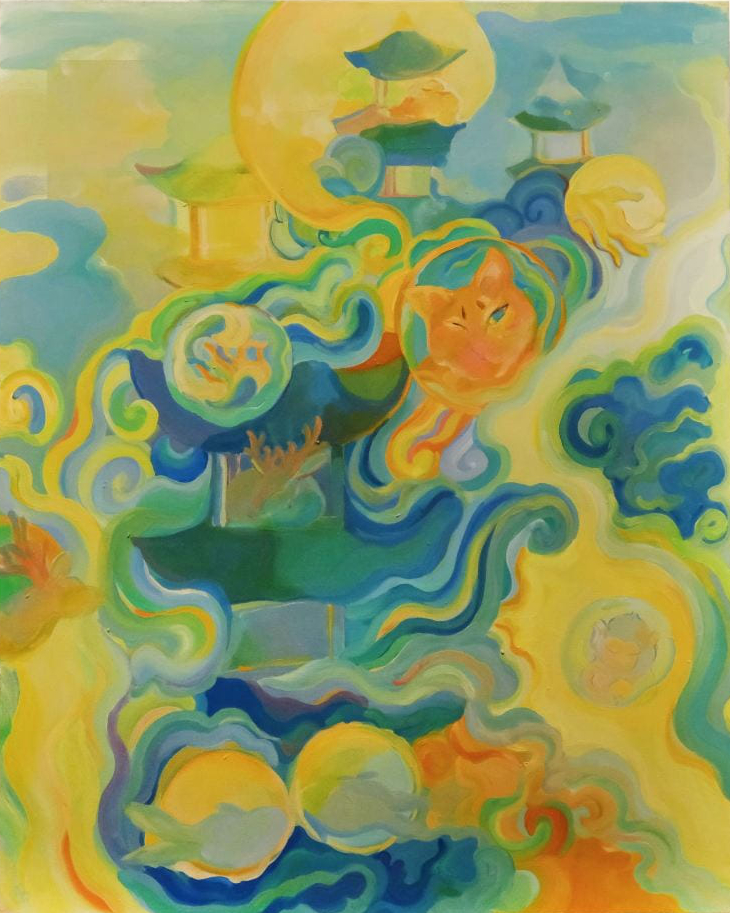
Finally, there is Sang Shen’s Harmonious Cosmos (2023), a series filled with pastel colours and swirling motifs. With her winking cats, distant pagodas and ethereal clouds, Shen’s work is startlingly different to Maggs’s and Whitlock’s on a formal level; however, it nevertheless also references biographical inspiration. Shen also emphasises the inconstant nature of her surroundings, creating a cartoon-like dream universe in which he invites his audience to play. This is confirmed by her version of the creation of Adam in Fate (2023)—a lovely, playful detail that I appreciated.
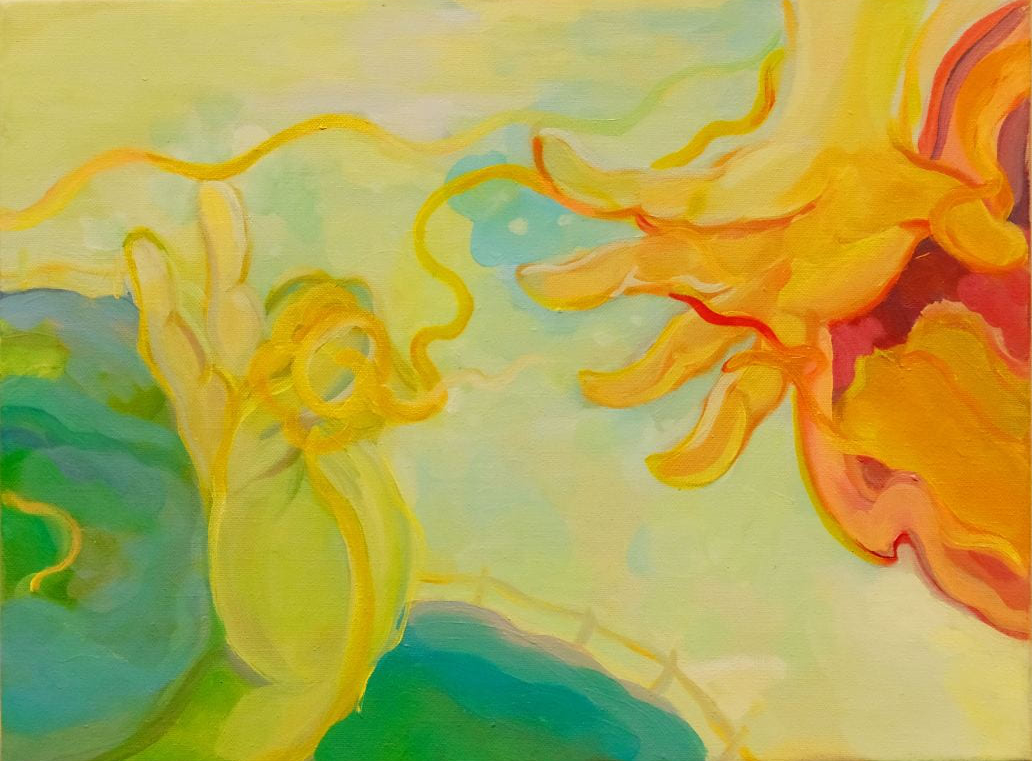
Biography, a constant subject for artists, is thoughtfully explored in the RMIT Masters of Fine Art exhibition, especially by Maggs, Whitlock and Shen. The three artists offer musings not only on their identities but also, more importantly, on the role of the artist’s identity in an artwork. Sometimes, personal backstories are impossible to ignore when we view an artwork, but often artworks are strongest when an artist’s backstory is just one of a myriad of interpretations that the artwork offers.
Emily Prater is an Art History student at the University of Melbourne.
